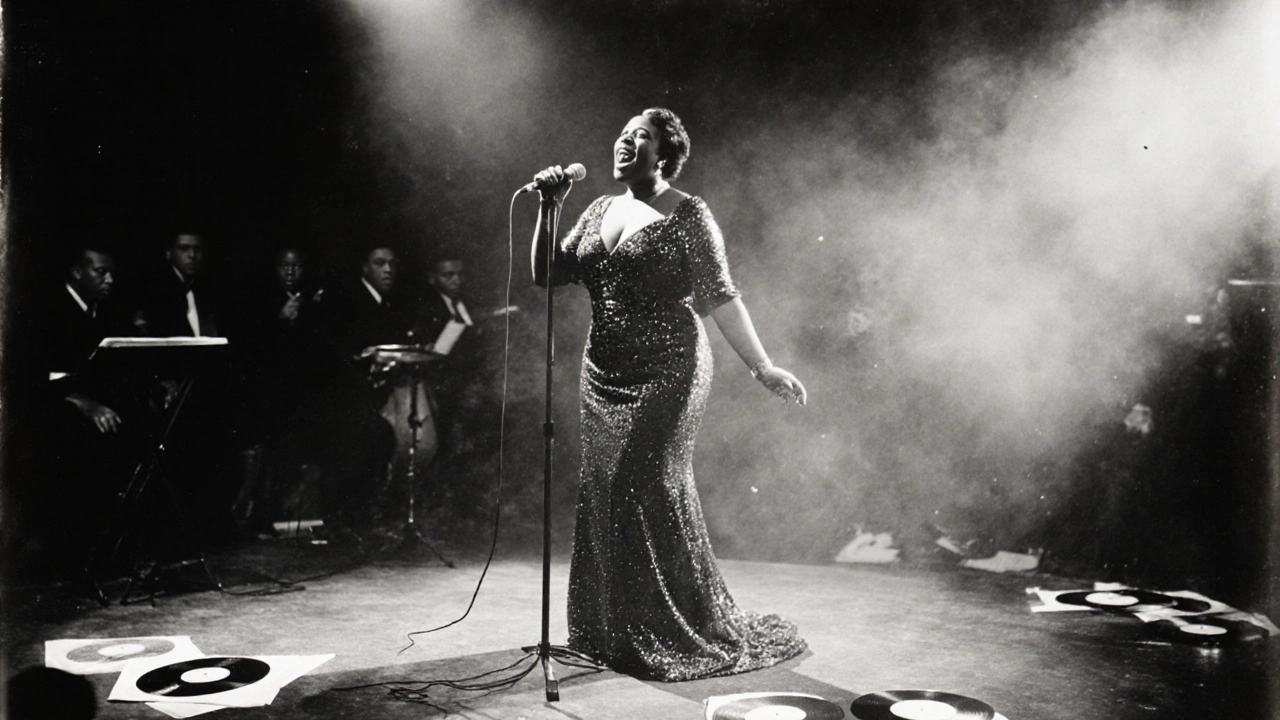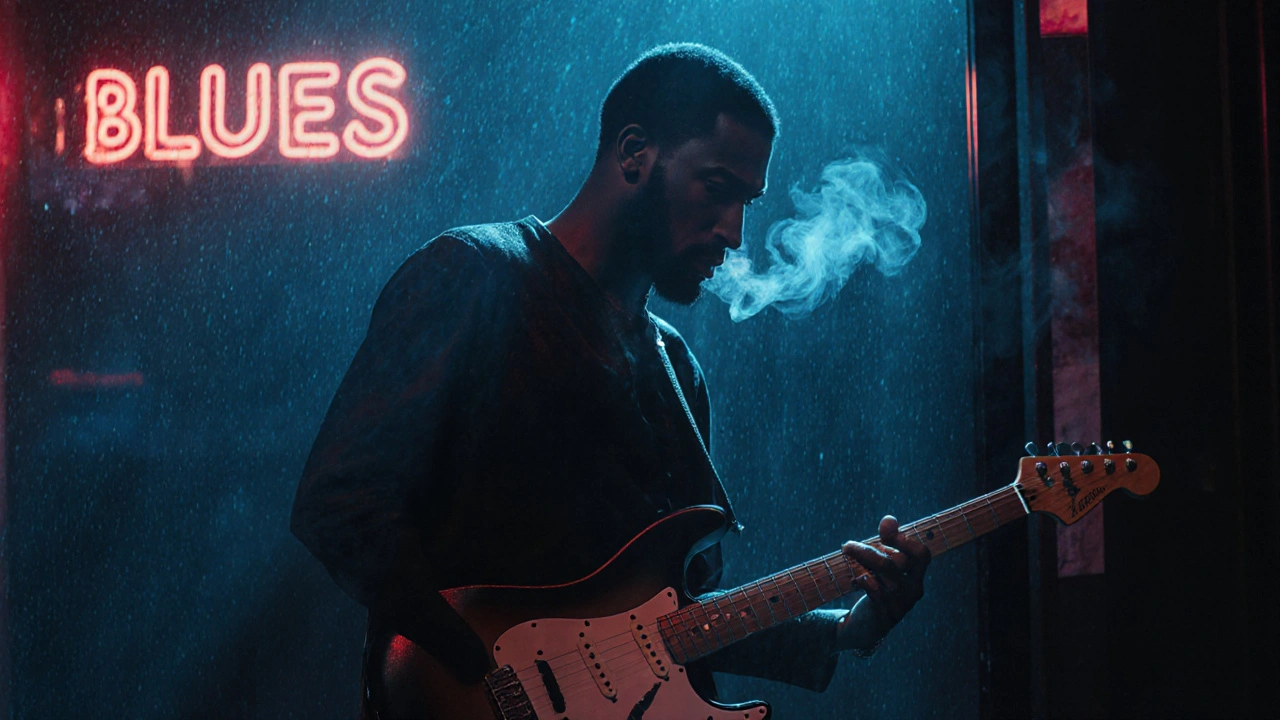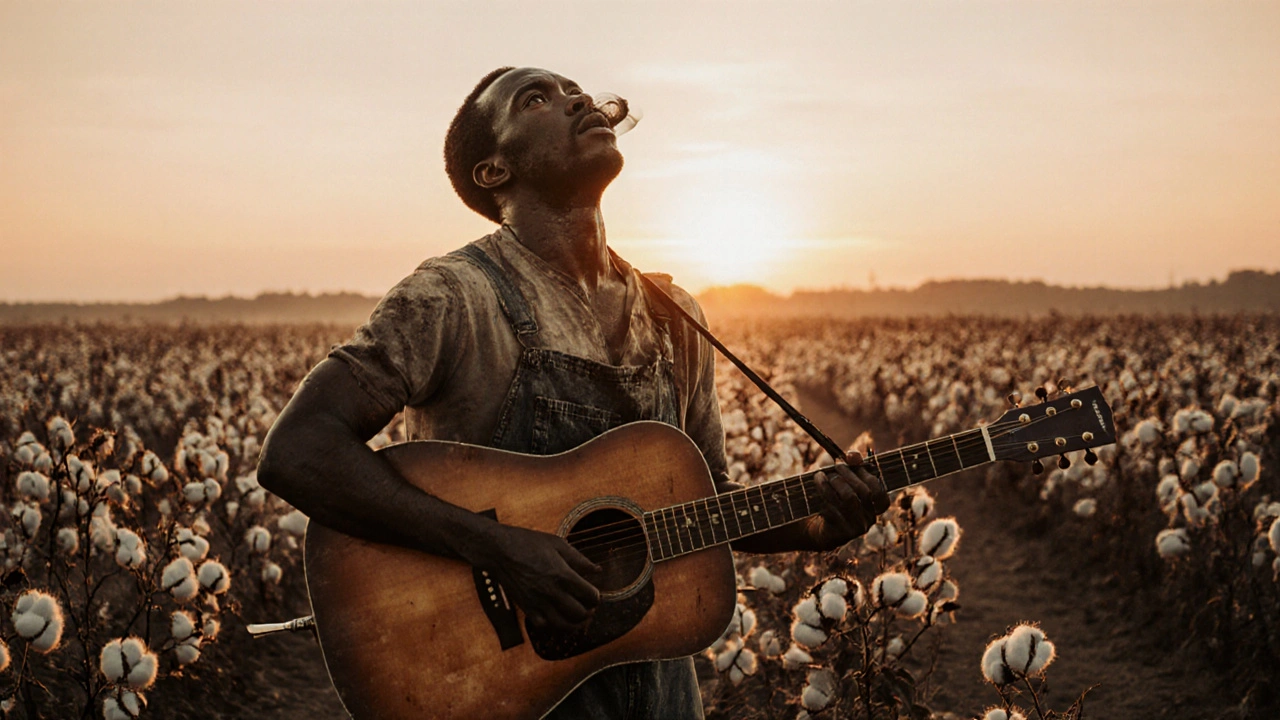Blues Rhythm Generator
Blues music isn’t just notes on a page or chords strummed on a guitar. It’s the sound of sweat on a hot Mississippi night, of a man crying out after losing everything and still finding the strength to sing. It’s the raw, unfiltered voice of pain turned into art. You can hear it in the bend of a single note, the pause before a vocal break, the way a slide guitar moans like a wind through empty fields. This isn’t background music. This is survival turned into song.
Where Blues Began: The Soil That Grew the Sound
Blues didn’t show up out of nowhere. It grew from the ground up - in the cotton fields of the Deep South, in the sharecropper cabins of Mississippi, Louisiana, and Alabama. After slavery ended, Black Americans still faced brutal conditions: low pay, violent racism, and no real escape. Music became the only thing they could own without permission. Field hollers, work chants, spirituals - these were the seeds. By the late 1800s, people began stitching them together into something new: the 12-bar blues structure, the call-and-response pattern, the blue notes - those flattened thirds and sevenths that sound like they’re bleeding.
It wasn’t called blues at first. People just called it ‘the devil’s music’ or ‘that lowdown stuff.’ But the sound stuck. A man named W.C. Handy, a classically trained musician, heard a stranger in a Mississippi train station playing a guitar with a knife, singing about a woman who left him. He wrote it down. That song, ‘Memphis Blues,’ became one of the first published blues tunes in 1912. Suddenly, the music had a name. And a path.
The Voices That Carried the Weight
Some names changed music forever. Bessie Smith, the Empress of the Blues, sold over 7 million records in the 1920s - more than most white stars of the time. She didn’t just sing; she roared. Her voice carried the grief of women who lost lovers to violence, to work, to time. She didn’t ask for sympathy. She demanded to be heard.
Then came Robert Johnson. He didn’t live past 27, but his recordings in 1936 and 1937 became the blueprint for rock and roll. Legends say he sold his soul at a crossroads for his talent. Maybe he did. His guitar playing was so sharp, so emotional, it felt like he was pulling pain straight from the earth. Songs like ‘Cross Road Blues’ and ‘Hellhound on My Trail’ still send chills today. He didn’t just play guitar - he made it cry.
Later came Muddy Waters, who took the Delta blues from rural Mississippi to Chicago’s smoky clubs. He plugged in his guitar, added drums and harmonica, and turned the blues into something electric - literally. His 1950 track ‘Hoochie Coochie Man’ became a hit not just because it was catchy, but because it spoke truth. He didn’t sing about love in a pretty way. He sang about power, pride, and survival.

The Emotion That Can’t Be Faked
What makes blues different from other genres? It’s not the chords. It’s not even the lyrics. It’s the emotion. Blues doesn’t pretend. It doesn’t polish pain into something palatable. It holds it up, looks it in the eye, and says, ‘Yeah, this hurts. But I’m still here.’
Try singing a blues lyric without feeling it. ‘I got a woman, way over town, she’s good to me, but she don’t understand.’ That’s not a love song. It’s loneliness dressed in rhythm. The singer isn’t asking for help. He’s just telling you how it is. That honesty is why blues has survived. No other genre lets you feel so deeply while staying so simple.
Listen to a modern blues artist like Gary Clark Jr. He plays a Fender Stratocaster like it’s an extension of his lungs. When he sings ‘Bright Lights,’ you don’t just hear a song - you feel the weight of being Black in America today. The blues didn’t die. It just changed clothes.
Why Blues Still Matters
People think blues is old-fashioned. That it’s just for collectors or nostalgia. But listen to the charts. The Rolling Stones, Eric Clapton, Led Zeppelin - they didn’t invent rock. They stole it from the blues. Without Muddy Waters, there’s no Jimmy Page. Without B.B. King, no Stevie Ray Vaughan. Even hip-hop draws from the same well. The rhythm, the storytelling, the rawness - it’s all blues DNA.
Blues isn’t about being popular. It’s about being real. In a world full of polished pop songs and auto-tuned vocals, blues reminds us that imperfection has power. A cracked voice can move you more than a perfect pitch. A broken chord played with feeling beats a flawless run every time.
Go to any blues club in New Orleans, Chicago, or even Perth - yes, there are blues bars here too - and you’ll see it. People aren’t there to show off. They’re there to feel something. A man in the corner, eyes closed, nodding slowly, tapping his foot. A woman wiping her cheek with the back of her hand. No one’s talking. No one’s taking photos. Just music. And silence after the last note fades.

The Tools That Made the Sound
Blues didn’t need fancy gear. A wooden guitar, a harmonica, sometimes just a man and his voice. But the way they used those tools changed everything.
- The slide guitar - a bottleneck, a knife, a glass bottle - dragged across the strings to mimic the human voice.
- The 12-bar structure - three lines, four bars each - simple enough for anyone to learn, deep enough to hold a lifetime of pain.
- The call-and-response - a singer sings, the guitar answers. Like a conversation between a man and his soul.
Even the harmonica wasn’t just an instrument. It was a second voice - crying, laughing, whispering. Sonny Boy Williamson didn’t play harmonica. He made it scream. And people listened.
Blues Is a Living Language
Blues doesn’t stay in museums. It’s alive in the hands of young musicians in Memphis, in the streets of Austin, in a garage in Perth where a teenager practices B.B. King licks after school. It’s in the way a grandmother hums a tune while washing dishes, unaware she’s keeping a 100-year-old tradition alive.
It’s not about copying old records. It’s about carrying the feeling forward. That’s why modern blues artists like Fantastic Negrito, Keb’ Mo’, or Ana Popović don’t sound like 1940s recordings. They sound like now - but with the soul of the past. They use electric guitars, drum machines, synths - but the heart? Still the same. Still raw. Still real.
Blues doesn’t ask you to understand it. It asks you to feel it. And if you’ve ever been lonely, angry, lost, or broken - you already do.
What makes blues music different from other genres?
Blues stands apart because it’s built on raw emotion, not perfection. It uses blue notes, a 12-bar structure, and call-and-response patterns to turn pain into something rhythmic and powerful. Unlike pop music that often avoids discomfort, blues leans into it - singing about loss, injustice, and hardship without sugarcoating. The goal isn’t to entertain - it’s to tell the truth.
Who are the most important blues artists?
Bessie Smith brought blues to the mainstream with her powerful voice in the 1920s. Robert Johnson’s haunting guitar work laid the foundation for rock. Muddy Waters electrified the sound in Chicago, turning acoustic Delta blues into urban blues. B.B. King made the guitar sing with his expressive bends and vibrato. Today, Gary Clark Jr. and Fantastic Negrito carry that legacy forward with modern production and unfiltered emotion.
Is blues music still relevant today?
Absolutely. Blues is the root of rock, R&B, soul, and even hip-hop. Its emotional honesty and rhythmic structure influence artists across genres. Modern blues musicians blend traditional elements with contemporary sounds, keeping the genre alive. You hear blues in the guitar riffs of The Black Keys, the storytelling of John Mayer, and the vocal delivery of Adele. The emotion hasn’t changed - just the tools.
Why do people say blues music is ‘the devil’s music’?
In the early 1900s, religious communities saw blues as sinful because it came from secular spaces - juke joints, bars, and fields - and dealt with themes like heartbreak, drinking, and sexuality. Unlike spirituals, which praised God, blues songs often talked about earthly struggles. The term stuck, but it was more about control than faith. People feared the freedom blues represented.
Can anyone play blues music?
Yes - but not just technically. You can learn the chords and scales in a week. But playing blues well requires feeling. You have to know what it’s like to be tired, lonely, or hurt. That’s why some of the best blues players aren’t the most skilled - they’re the ones who’ve lived. The music doesn’t care if you’re young or old, rich or poor. It only cares if you’re honest.

